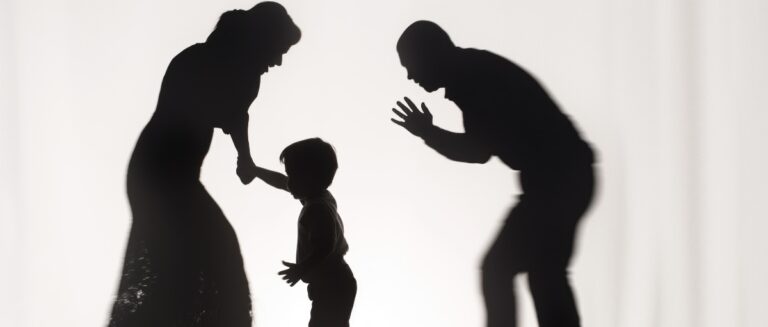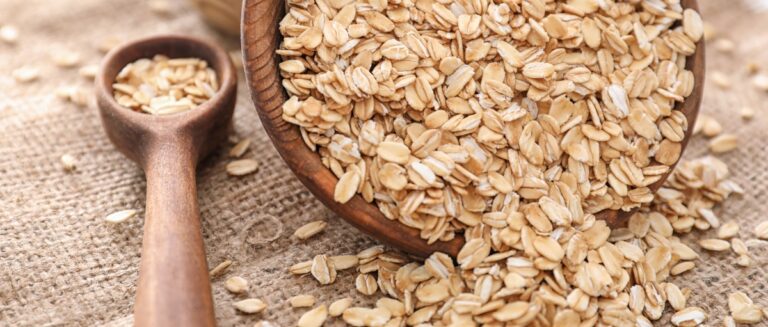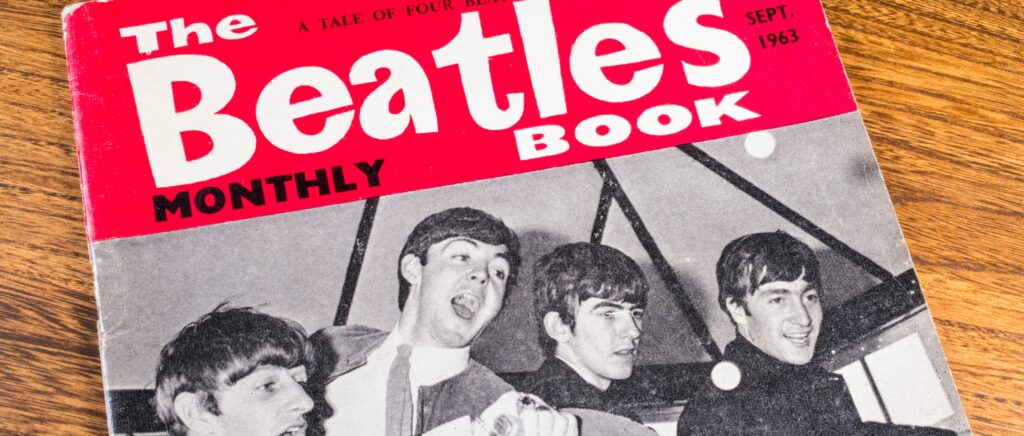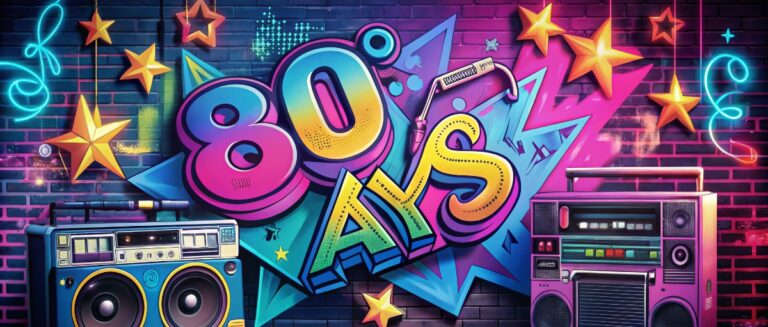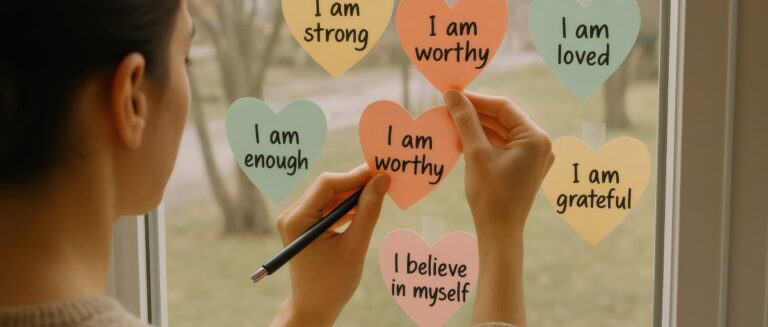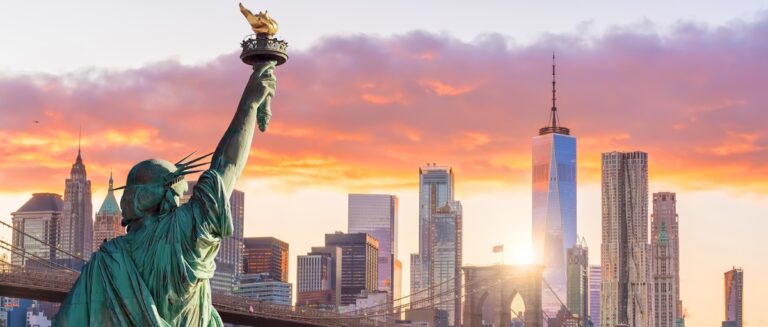What songs bring you back to the 1960s? For many baby boomers, the music of the ’60s provided the soundtrack to their coming of age. Those teenage years and early 20s are a formative time for musical taste—in fact, studies show that our favorite songs are usually the ones we heard between ages 15-21.
If you grew up in the 1960s, chances are the decade’s most popular tunes are forever burned in your brain. From the British Invasion to Motown to folk-rock, the ’60s saw an explosion of innovative sounds and styles that pushed rock and soul in exciting new directions.
This article will revisit the top 10 songs that defined the ’60s and left a lasting mark on boomer culture. Prepare for a nostalgic trip through the decade’s musical highlights as we explore the groundbreaking hits with kids rushing to drop the needle on the record player.
You’ll learn the stories behind legendary tracks like Bob Dylan’s “Like a Rolling Stone,” Marvin Gaye’s “I Heard It Through the Grapevine,” and The Beatles’ “I Want to Hold Your Hand” and understand why they mean so much to the boomer generation.
So dust off your old records, cue up your vintage jukebox, and get ready to travel back to the ’60s as we count down the decade’s 10 most unforgettable songs. It’s time to twist and shout down memory lane.
The 1960s Music Scene: How a Cultural Revolution Transformed the Airwaves
The 1960s was a decade of massive upheaval and change, and nowhere was that more apparent than in popular music. As baby boomers came of age, they sought sounds reflecting their generation’s experiences and values. Music became a vehicle for social commentary, self-expression, and rebellion against the status quo.
A Changing Cultural Landscape
Several key factors in 1960s culture shaped the trajectory of popular music:
- The Civil Rights Movement: Music became a powerful tool for African-American empowerment and protest, from Sam Cooke’s “A Change Is Gonna Come” to James Brown’s “Say It Loud – I’m Black and I’m Proud.”
- The Vietnam War: As the conflict dragged on, anti-war sentiment began to permeate rock and folk music, captured in songs like Bob Dylan’s “Blowin’ in the Wind” and Creedence Clearwater Revival’s “Fortunate Son.”
- The Counterculture Movement: Hippies and young activists rejected mainstream society and embraced a more progressive, experimental ethos that extended to their musical tastes. Psychedelic rock and jam bands like The Grateful Dead soundtracked this alternative lifestyle.
- The “British Invasion”: The Beatles landing in America in 1964 kicked off a tidal wave of British rock bands that revolutionized the sound and look of pop music, from The Rolling Stones to The Who.
- The Summer of Love: 1967 saw a explosion of creativity and cultural change centered in San Francisco’s Haight-Ashbury neighborhood, with landmark festivals like the Monterey Pop Festival showcasing the era’s iconic performers.
Against this political and social change backdrop, new genres and subcultures took root in the ’60s music scene.
Motown and R&B Break Through
The signature “Motown Sound” took the country by storm in the 1960s, bringing polished, soulful hits by Black artists into the mainstream. With artists like The Supremes, The Temptations, Marvin Gaye, and Stevie Wonder, Motown became a crossover sensation, landing 79 records in the Billboard Hot 100’s top 10 during the 1960s.
Other R&B and soul artists also achieved unprecedented popularity with white audiences in this decade, especially Aretha Franklin, whose 1967 covers of “Respect” and “Chain of Fools” became enduring female empowerment anthems. James Brown, the “Godfather of Soul” burst onto the scene with a string of classic singles like “Papa’s Got a Brand New Bag” and “I Got You (I Feel Good).”
The British Are Coming
When The Beatles appeared on The Ed Sullivan Show in 1964, 73 million viewers tuned in. Beatlemania had reached a fever pitch, and soon other mop-topped British acts like The Rolling Stones, The Animals, and The Kinks joined the so-called “British Invasion,” infusing American music with a gritty, blues-based sound.
The Stones quickly gained notoriety as the edgier, bad-boy alternative to the Beatles, with raw rockers like “(I Can’t Get No) Satisfaction” and “Paint It Black.” By the mid-’60s, these British bands began to evolve past straightforward pop-rock into more experimental and sophisticated psych-rock, with albums like the Beatles’ “Sgt. Pepper’s Lonely Hearts Club Band” and the Stones’ “Their Satanic Majesties Request” expanding the boundaries of studio production and songwriting.
Folk and Protest Music Revival
The early ’60s saw a boom in socially-conscious folk music, spearheaded by Greenwich Village troubadours like Bob Dylan, Joan Baez, and Peter, Paul & Mary. Earnest acoustic songs tackled issues like the Civil Rights Movement and Vietnam, becoming rallying cries for the burgeoning youth protest culture.
Dylan became the poster boy of this scene with his 1963 antiwar classic “Blowin’ in the Wind,” but he soon sparked backlash from folk purists for going electric on his 1965 opus “Like a Rolling Stone.” His plugged-in sound was a sign of the harder-rocking direction folk was heading by the decade’s end with bands like Buffalo Springfield and Crosby, Stills & Nash.
The Psychedelic Sounds of the Late ’60s
As the decade wore on, the ’60s music scene got more far out and trippy, with the rise of psychedelic rock and jam bands. Pioneered by mind-expanding California groups like The Grateful Dead, Jefferson Airplane, and Quicksilver Messenger Service, psych-rock used feedback, distortion, and sprawling improvisation to evoke the drugs and spirituality at the core of hippie culture.
By 1967’s “Summer of Love,” lysergic-laced singles like Jefferson Airplane’s “White Rabbit” and Procol Harum’s “Whiter Shade of Pale” were all over the radio. Even more straight-ahead pop/rock artists like the Beatles and Beach Boys began dabbling in psychedelic sounds on albums like “Magical Mystery Tour” and “Pet Sounds.”
Music Festivals Bring the Counterculture Together
The late ’60s saw the rise of massive outdoor music festivals that gathered the decade’s booming youth culture and defined the era’s freewheeling spirit. The most famous of these was 1969’s Woodstock, which drew over 400,000 people to a muddy field in upstate New York to trip out to sets from ’60s idols Jimi Hendrix, Janis Joplin, The Who, and more.
Other landmark fests included 1967’s Fantasy Fair, Magic Mountain Music Festival, and Monterey Pop Festival, which helped launch the careers of Hendrix, Joplin, and The Who in the U.S. These gatherings exemplified the communal spirit and musical adventurousness of the hippie counterculture.
A Rapidly Evolving Industry
The ’60s saw major evolutions in music making, transmitting, and consuming. The popularity of the freshly invented car radio format led to a network of powerful Top 40 stations across the country that could turn a song into an overnight hit.
Lower prices for LPs and improvements in recording technology led to the release of almost thousands of albums in 1966 alone. Experimental producers like Phil Spector and George Martin used the studio as an instrument, crafting ornate “Wall of Sound” productions that revolutionized pop song structure and instrumentation.
All these elements converged to create a thrillingly eclectic and fast-changing musical landscape that had been dominated by teen idols and pre-rock pop just a decade earlier. For 1960s babies coming of age in these years, it was an exhilarating time to turn on the radio and hear the sounds of a generation figuring itself out in real-time.
As we’ll see in our top 10 list, the decade’s defining songs combined all these crosscurrents—rock, soul, folk, psych, protest, and poetry—into indelible anthems that remain etched in the boomer memory.
The Top 10 Songs of the 1960s: A Countdown of Classics
Now that we’ve set the stage of the 1960s music scene, let’s dive into our list of the decade’s most defining tunes. These 10 tracks span the gamut of ’60s sounds, from infectious pop melodies to gritty R&B to sprawling psychedelic jams. But they all share one thing in common: an uncanny ability to transport boomers back to a specific time and place in their youth.
10. “Respect” – Aretha Franklin (1967)
The Queen of Soul Redefines a Classic
Aretha’s first No. 1 hit was a funky feminist reworking of Otis Redding’s 1965 track. Backed by her sisters Carolyn and Erma, Aretha spells out “R-E-S-P-E-C-T” with a sassy verve, demanding the titular dignity of her man and sounding downright heroic in the process. Adding the “sock it to me” refrain took the song to the next level of catchiness and attitude.
Reaching No. 1 during the Summer of Love, “Respect” became an instant classic, making Aretha an icon of both women’s liberation and Black Power movements. The song earned her two Grammys, securing her place in the pantheon of soul greats. Five decades later, it still feels as urgent and empowering as ever.
9. “Good Vibrations” – The Beach Boys (1966)
A Psychedelic Symphony of Sounds
Clocking in at over three minutes, the Beach Boys’ experimental opus was far from their usual sunny surf rock. The song began as a simple doo-wop vamp from Brian Wilson. Still, it morphed into an intricate latticework of avant-garde sounds: eerie theremin, pulsating organ, and lush orchestration courtesy of over 90 hours of tape splicing.
The result was a bona fide masterpiece that took six months, 17 sessions, and over $50,000 to record—an unheard-of figure at the time. “Good Vibrations” topped charts worldwide and was hailed by critics as a game-changing achievement in pop production. It marked Brian’s creative peak before his soon-to-follow mental health struggles and remains the gold standard of baroque psychedelia.
8. “I Heard It Through the Grapevine” – Marvin Gaye (1968)
Motown Meets the Viet Cong
“I bet you’re wonderin’ how I knew…” Gaye grabs listeners by the collar from that opening lyric and doesn’t let go for three minutes of searing soul-bearing. His brooding take on Norman Whitfield and Barrett Strong’s classic explodes with suspicion and rage as he learns of his girl’s infidelity through the cruel gossip grapevine.
Recorded in the same year as Martin Luther King Jr.’s assassination, Gaye channels both personal and political frustration into his intense vocal. Bolstered by Motown’s crack session band the Funk Brothers, and a spooky organ line, “Grapevine” stayed at No. 1 for seven weeks and cemented Gaye’s transition from teen idol to tortured auteur. It’s since been covered by everyone from Creedence Clearwater Revival to The Slits.
7. “Light My Fire” – The Doors (1967)
The Sound of Swinging ’60s L.A.
Clocking in at nearly seven minutes, the Doors’ second single was daunting for radio play. But that didn’t stop it from climbing to No. 1 and staying there for three weeks during the Summer of Love. “Light My Fire” perfectly encapsulated the Doors’ bewitching brew of jazz, flamenco, blues, and rock freak-outs.
An unforgettable organ riff from Ray Manzarek kicks things off, followed by Jim Morrison’s come-hither invitation to “Come on baby, light my fire.” Robby Krieger contributes a scorching guitar solo, while John Densmore keeps the whole thing swinging with his tight, rattling drum work. Too sexy for Ed Sullivan, who asked the band to change the “Girl, we couldn’t get much higher” lyric for their live TV performance (Morrison refused), “Light My Fire” still smolders with dark, mysterious cool.
6. “What a Wonderful World” – Louis Armstrong (1967)
Pops’ Poignant Ode to Peace
There’s a profound bittersweetness to Satchmo’s autumn years hit. Released at the height of the Vietnam War, its gentle, radiant optimism feels all the more moving and necessary. Over lush strings and angelic backing vocals, Armstrong reflects on the beauty of nature and humanity with childlike awe and gratitude.
At age 66, Armstrong’s famously gravel voice had become weathered and weary, lending the song an elegiac air. He recorded his vocals in one take just months before succumbing to a heart attack. Though it only reached No. 116 on the charts originally, “What a Wonderful World” grew in stature over the years due to its use in films like Good Morning, Vietnam. It’s now an American standard and a heartening antidote to troubled times, much like Armstrong himself.
5. “A Change Is Gonna Come” – Sam Cooke (1964)
The Civil Rights Struggle Set to Song
Inspired by Bob Dylan’s protest anthems, soul legend Sam Cooke set out to write his own song addressing the racial injustice he experienced as a Black man in America. The result was this heartrending hymn of hope and determination in the face of oppression. Over swelling strings and brass, Cooke testifies about the “hard times” he’s seen but resolves that change and redemption are on the way.
Tragically, Cooke wouldn’t live to see that change fully realized. He was shot to death under murky circumstances in December 1964, just two weeks before the song was released as a single. In the wake of his death, “A Change Is Gonna Come” took on even more resonance as a rallying cry for the Civil Rights Movement. It’s since been covered countless times and added to the Library of Congress’ National Recording Registry.
4. “The Sound of Silence” – Simon & Garfunkel (1965)
Folk-Rock Poets Capture the Zeitgeist
When Paul Simon first penned “The Sound of Silence” in 1964, it was a spare, haunting acoustic ballad that barely made a ripple on the charts. But a year later, the song got a second life when producer Tom Wilson overdubbed electric guitars, bass and drums, transforming it into a folk-rock anthem for a generation grappling with the tumultuous events of the ’60s.
“The Sound of Silence” became Simon & Garfunkel’s breakthrough hit, reaching No. 1 on the Billboard Hot 100 in January 1966 and turning the duo into countercultural icons. Its fusion of introspective lyrics and shimmering folk-pop arrangements paved the way for the confessional singer-songwriter movement of the ’70s and remains a staple of classic rock radio. Plus, it’s hard to hear that opening line – “Hello darkness, my old friend” – without getting chills down your spine.
3. “Blowin’ in the Wind” – Bob Dylan (1963)
The Bard of Protest Pens an Enduring Anthem
Bob Dylan was just 21 when he wrote the song that would become the clarion call for the 1960s protest movement. Modeled after a traditional slave spiritual, “Blowin’ in the Wind” combines simple, poetic imagery (roads, seas, doves) with pointed questions that cut to the heart of the era’s social and political unrest.
“How many years can some people exist/Before they’re allowed to be free?” Dylan asks pointedly. The answer, my friend, is blowin’ in the wind.” The song’s elegant simplicity belied its subversive power. Soon, it was sung at civil rights rallies and anti-war demonstrations across the country and became a global hit through popular covers by Peter, Paul, and Mary and Stevie Wonder. Nearly 60 years later, its central questions about war, prejudice, and freedom remain hauntingly relevant.
2. “I Want to Hold Your Hand” – The Beatles (1963)
Beatlemania Touches Down in America
The mop-topped Liverpudlians had already conquered England with this effervescent slice of puppy love pop. But it was their electrifying live performance of the song on The Ed Sullivan Show on February 9, 1964 that officially launched “Beatlemania” and the British Invasion of the American charts.
The song bursts with punk energy and unabashed romanticism from that iconic opening guitar riff. John Lennon and Paul McCartney’s voices blend seamlessly as they pine for the object of their affection, while hand claps and George Harrison’s bright, chiming guitar licks add to the giddy urgency. The song stayed at No. 1 for seven weeks and established the Fab Four as generational spokesmen. Countless teens shared the sentiment when they screamed, “I wanna hold your ha-a-a-and!”
1. “Like a Rolling Stone” – Bob Dylan (1965)
Rock Grows Up and Gets Weird
Clocking in at over six minutes, “Like a Rolling Stone” shattered the limitations of the traditional pop song both in length and subject matter. Over a raucous, ragged backing from members of the Paul Butterfield Blues Band, Dylan sneers a series of cryptic, hallucinatory images and insults at a mystery woman known only as “Miss Lonely.”
The song’s central refrain—”How does it feel/to be on your own/with no direction home”—captures the rootless alienation of countercultural youth, while its swirling organ and surreal lyrics point towards the psychedelic experimentation to come. Voted the greatest song of all time by Rolling Stone magazine, it remains an enduring ode to disillusionment and a landmark in Dylan’s electrifying artistic evolution.
The Enduring Legacy of ’60s Sounds
Jimi Hendrix, Elvis Presley, the Beatles, Aretha Franklin, The Who, and the Beach Boys—they’re all classics for a reason.
The 1960s brought us a diverse mix of sounds, styles, and themes, capturing the era’s revolutionary spirit and reflecting societal upheaval. The music of this era influenced generations of artists to come and is a living document of cultural shifts. Its impact is still felt today, resonating deeply with listeners across generations.
Sources
The Guardian. (2016). In 1966, an LP cost almost a quarter of a teenage pop-picker’s pay. The Guardian. https://www.theguardian.com/business/2016/nov/16/in-1966-an-lp-cost-almost-a-quarter-of-a-teenage-pop-pickers-pay
BBC Radio 2. (n.d.). Good vibrations by The Beach Boys. BBC Radio 2. https://www.bbc.co.uk/radio2/soldonsong/songlibrary/indepth/goodvibrations.shtml
People. (2024). Why mystery still shrouds singer Sam Cooke’s shooting death nearly 60 years later. People. https://people.com/movies/why-mystery-still-shrouds-singer-sam-cookes-shooting-death-nearly-60-years-later/
Evening Standard. (n.d.). Revealed: Why our favourite songs are ones from teenage years. Evening Standard. https://www.standard.co.uk/hp/front/revealed-why-our-favourite-songs-are-ones-from-teenage-years-7204409.html
The Ed Sullivan Show. (n.d.). The Beatles on The Ed Sullivan Show. The Ed Sullivan Show. https://www.edsullivan.com/artists/the-beatles/
History. (n.d.).Woodstock music festival. History. https://www.history.com/topics/1960s/woodstock

